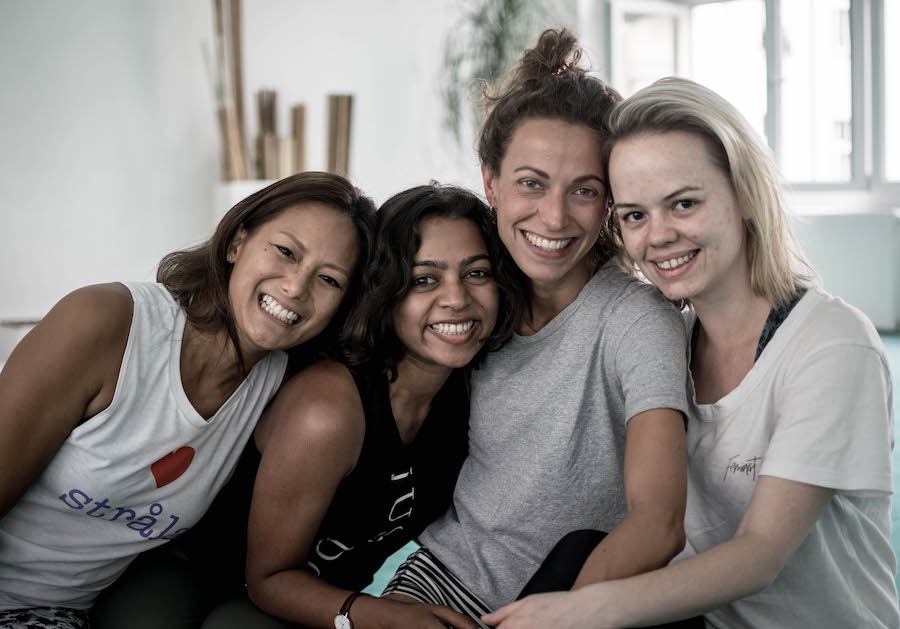Traditional Western medicine treats the disease not the person.
Traditional shiatsu prescribes a fixed set of rules and procedures for each problem.
Traditional yoga mandates specific defined poses to put people in.
Who made these rules? As my wife Tara Stiles has mentioned, they’re extremely limiting.
Our traditional medicine is great for infections and broken bones. It’s not working for most things that are bringing people pain and suffering today, like stress, obesity, and the worst of our associated diseases.
Traditional shiatsu may work sometimes, but often that’s by accident.
Traditional yoga – fixing people into “correct” poses – is missing the boat. It’s leading people to follow gurus – outside sources of information – rather than themselves.
Why isn’t this working?
My friend Sam Berlind is by all accounts a master of shiatsu, and blew our socks off at Strala this past weekend. He’s also worked with Traditional Chinese Medicine, Tai Chi, Qi Gong, and yoga, all as paths to healing. His work in shiatsu began with 25 years under Wataru Ohashi’s direction, from whom I learned as well.
Ohashi’s approach to shiatsu broke the rules. He saw that treating people as patients using fixed prescriptions worked sometimes, but he suspected that was very often an accident. The rules-based, master-patient approach lacked fluidity and responsiveness to what existed right there with each unique person, in each unique life.
So he developed his own approach. As Sam describes it, this new approach to shiatsu throws aside the idea of a master attempting to fix a patient. There is no fixing. Instead, there are two people supporting each other, right in that moment. The giver forms a connection with the receiver. We aim to gently push, pull, challenge, and get out of the way so our bodies can heal themselves more effectively.
Sam also said something else that hit us all pretty solidly. The shiatsu giver knows less than the receiver. The yoga teacher knows less than the student.
Could that be right? Of course. The student knows how they feel. The teacher can only guess.
For all of us, whether we’re doctors, shiatsu masters, or yoga teachers, that guess is diagnosis. Whether we admit it or not, it’s all guessing. Our treatment is a guess, too. Sometimes we get to be right.
This suggests a shift in how we approach each other.
I’ve always loved the song ‘Dueling Banjos.’ I’ve never loved so much dueling yoga teachers. Who can prove who’s lineage and guru is right about how to fix people, how to get them into the right place?
There’s a problem with that. There is no right place! We’re all different from each other. We’re even different from ourselves day to day. What did we eat yesterday, did we go for a long run, sit a desk all week, what feels right in my body right now?
We’re not here to fix each other. There is a trend in yoga around adjustments – where a teacher approaches the student to change their form, and move them into some idea of a “correct” pose. This is crazy, and goes hand in hand with the trend of aggressive yoga teachers injuring their students.
There is no correct pose. There is just my body and my life right now, and I’m the only one who can directly feel me. The right form for me each day, each moment, has to do with responding to my entire life. The right place and movement for my body is all mine! If a teacher can help me, it’s in supporting me to feel me. I can stop pushing and struggling to get into someone else’s shape (which means no more injuries!), and find my way into my own.
We’re here to support each other. It’s the best thing we can do. Just like Ohashi and Sam, Tara broke the rules in creating Strala. She moved away from the common yoga teacher focus of “how can I prove what I know” to a more gentle and useful “how can I help?” Whether you’re talking about shiatsu or yoga, helping people is about making a connection. When we help and support each other to connect to ourselves, yoga works. It cures. We get healthy and happy, and lead our best most capable lives.

